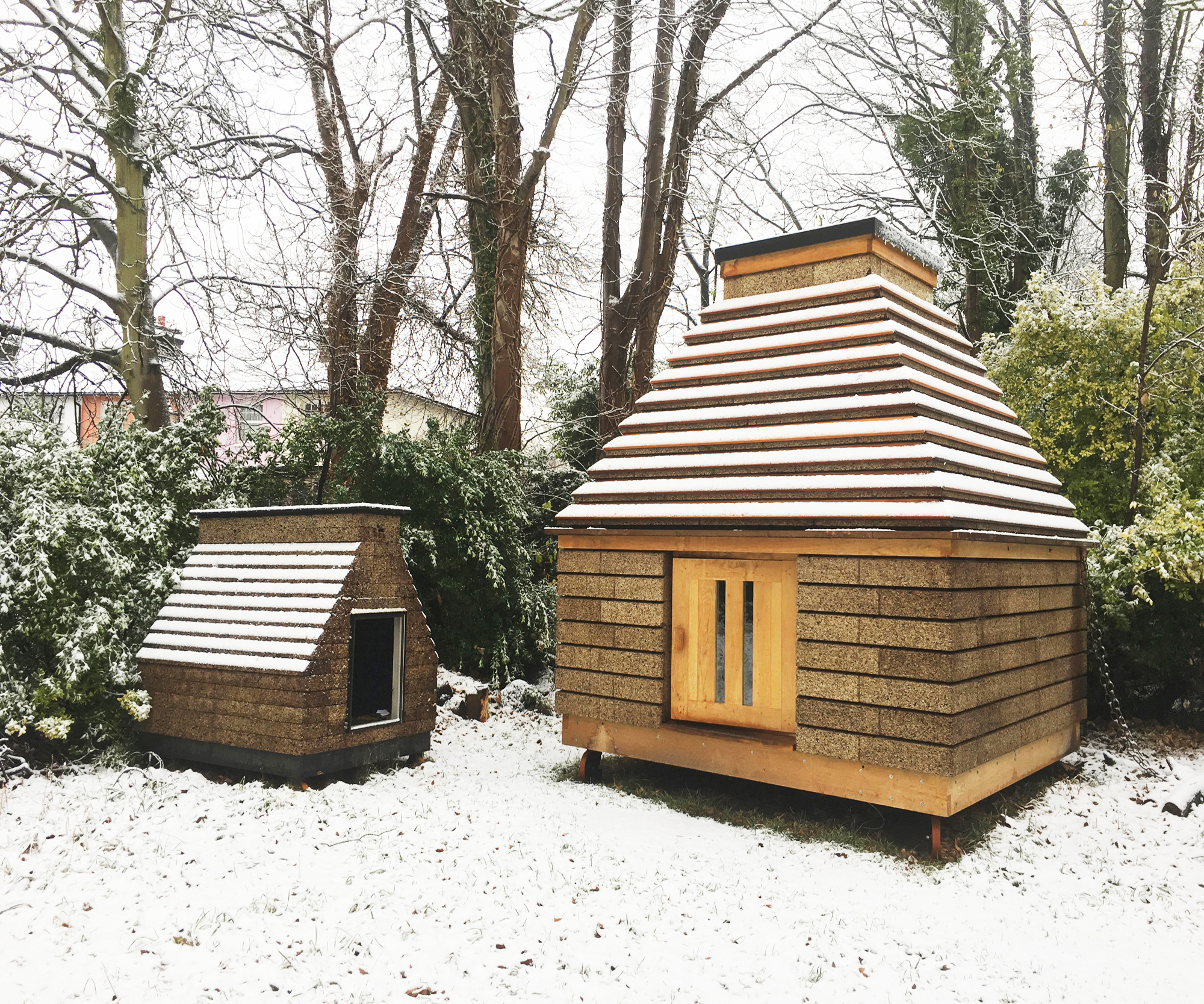CORK RESEARCH
The detailed research, testing and development of the cork construction system was undertaken from 2015 to 2018 by MPH Architects, The Bartlett UCL, University of Bath, Amorim UK and Ty-Mawr, with subcontractors including Arup and BRE. The research has been documented as ‘Cork Construction Kit’, which is a winner of an RIBA President’s Award for Research 2019.
Robotic milling of cork roof block for prototype Cork Cabin in B-made workshops at The Bartlett UCL (video by Oliver Wilton and Mike Arnett, post-production by Maze Lab, soundtrack by THREE)
Research on building with solid cork commenced in 2014, part funded by an Innovate Voucher from Innovate UK, with material free issued by Amorim. Matthew Barnett Howland and Oliver Wilton undertook initial design and prototyping work at the Bartlett School of Architecture UCL. This started the investigation of using solid expanded cork blocks, made of 100% cork granules from cork oak forestry, to create a form of block-based construction. There were a number of motivations for starting the research, including a desire to extend the application of this plant-based material, which has been in use for millennia, to create a simple form of construction based on cork stereotomy. This rudimentary early research helped to determine the potential for this approach and informed the main research project outlined below.
102474 SOLID CORK BUILDING ENVELOPE
The detailed research, testing and development of the cork construction system was part-funded by Innovate UK grant number 102474 and EPSRC grants numbers EP/N509048/1 and EP/N50905X/1 under the 2015 Building Whole Life Performance competition. The funding gave the opportunity for in-depth research with the aim of developing a viable cork construction system with outstanding whole life performance – made of plant-based materials, using a dry jointed interlocking block system for simple assembly and disassembly.
The research included much design hypothesising and preliminary prototyping, and the development of a robotic milling technique at The Bartlett used to form the blocks. Test panels were made and lab tested with regard to a range of performance criteria. University of Bath focussed on structural characterisation testing and BRE undertook tests relating to fire performance and rain tightness. A small ‘Cork Cabin’ prototype was created, which was air pressure tested and monitored to help establish performance through the seasons under actual weather conditions. The research contributed to the development of the cork construction system and ascertained its viability fora range of applications. It also de-risked the system to a sufficient extent for application to its first live architecture project, the Cork House.











